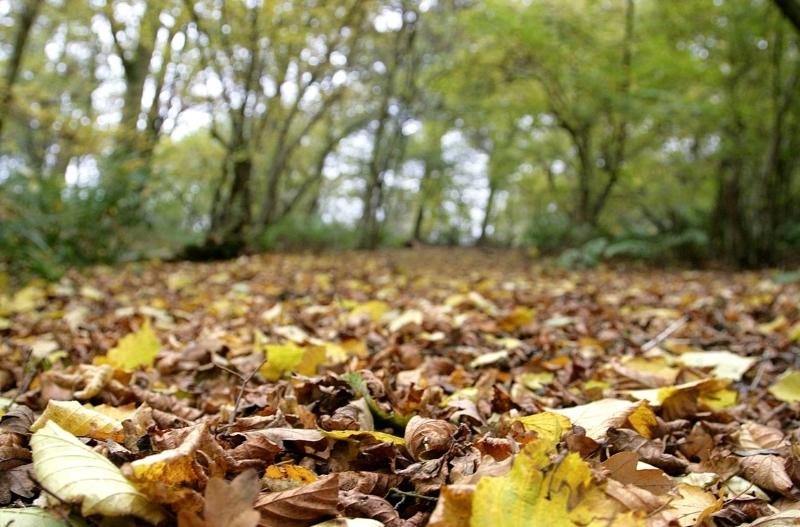
Grounding: get barefoot in the Forest
Slipping off your shoes and socks and connecting to the earth with your bare feet not only feels good; research suggests that this simple act can boost immunity, strengthen muscles and improve sleep. Find out how practising grounding next time you visit the Forest can improve your health and wellbeing.
What is grounding?
Grounding, sometimes also called ‘Earthing’, is simply being or walking barefoot on the ground. The surface must be natural e.g. soil or grass in the Forest, rather than a pavement or man made walkway.
Our modern lifestyles and fashions remove our contact with the earth. We largely spend our days indoors or outdoors with rubber sole non-conducting shoes, meaning we hardly ever come into direct contact with the surface of our planet.
The research suggests that the earth gives off a subtle negative electron charge, which neutralises the positive charge that we build up throughout our day and which can be detrimental to our health. Everyday items give off a positive charge, such as phones, TVs and computers and this can be neutralised by taking off your shoes and reconnecting with the earth’s charge.
If nothing else, then the way our feet land on the ground when we walk barefoot is more natural and therefore better for our bones, joints and muscles than walking in heeled shoes. This is something that is championed by manufacturers that make shoes designed to feel as close as possible to being barefoot.
Walking directly on the ground can feel really special. You may recognise this feeling from walking on the beach as the sand slips between your toes and you feel the gentle heat of sun-warmed sand beneath the soles of your feet. The feeling is similar when we walk on grass or any other natural surface – why not give it a go when you next visit the Forest?
The benefits of grounding
There are many reasons to try grounding on your next Forest walk, as research suggests that it can:
- Build stronger muscles
- Encourage better mobility and posture
- Regulate the nervous system
- Improve sleep quality
- Reduce pain
- Boost immune system
- Increase blood viscosity
Try it out yourself
Grounding could not be easier. Simply take your shoes and socks off and spend some time barefoot on the ground. Feel the grass between your toes as you walk along the footpaths at Giddings or Haydon Way Wood, or the wet soil near the Noleham Brook along the Riverside Trail from Dorothy’s Wood car park.
Have a garden? Just a few moments standing barefoot on your lawn will be beneficial. If you do not have a garden, then next time you’re sitting in your local park or the Forest, just slip off your shoes and firmly place your feet on the ground.
Living barefoot
Some people take this even further and walk, run and live barefoot. Barefoot champions include Tony Riddle, the natural lifestylist, who plans to run the Three Peaks Challenge barefoot.
Tony says: “By combining nature immersion with breathwork and barefoot grounding practices we can access what I consider the closest we will ever get to a panacea. This life-giving trifecta possesses an ability to radically transform our stress induced, urbanite frequency and have us buzzing high on a natural vibration from the outside in and the inside out.”
Try it out and tell us how you feel by tagging us on Facebook, Instagram or Twitter and using the hashtag #feelgoodforest.
NOTE: Watch out for sharp objects and surfaces when walking barefoot outdoors – our modern world isn’t always set up for barefoot living.
Feel good in the Forest
Our series of forest therapy articles explores the different ways we can feel good when visiting the Forest. Read about mindfulness and birdsong and discover the benefits of forest bathing.
Further Reading
Chevalier, G., Sinatra, S. T., Oschman, J. L., Sokal, K., & Sokal, P. (2012). Earthing: health implications of reconnecting the human body to the Earth’s surface electrons. Journal of environmental and public health, 2012, 291541. https://doi.org/10.1155/2012/291541
Chevalier, G., Sinatra, S. T., Oschman, J. L., & Delany, R. M. (2013). Earthing (grounding) the human body reduces blood viscosity-a major factor in cardiovascular disease. Journal of alternative and complementary medicine (New York, N.Y.), 19(2), 102–110. https://doi.org/10.1089/acm.2011.0820
Oschman, J. L., Chevalier, G., & Brown, R. (2015). The effects of grounding (earthing) on inflammation, the immune response, wound healing, and prevention and treatment of chronic inflammatory and autoimmune diseases. Journal of inflammation research, 8, 83–96. https://doi.org/10.2147/JIR.S69656
Sokal, P., & Sokal, K. (2011). The neuromodulative role of earthing. Medical hypotheses, 77(5), 824–826. https://doi.org/10.1016/j.mehy.2011.07.046



